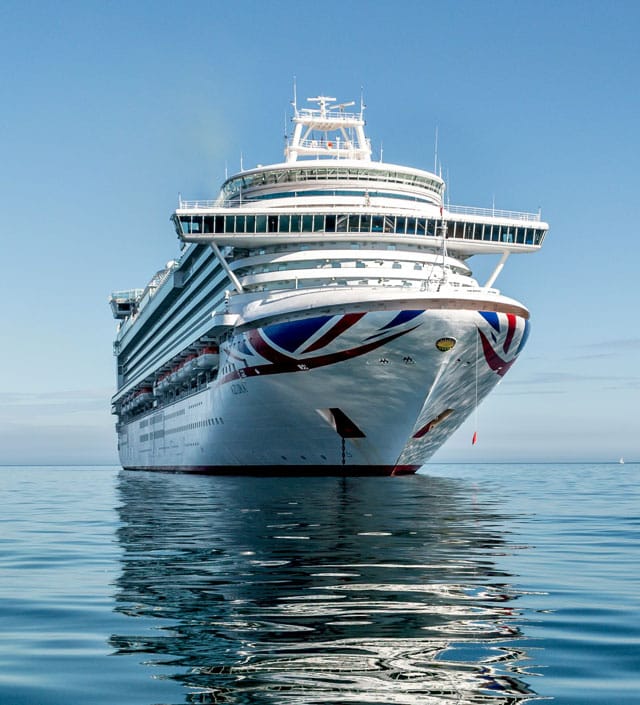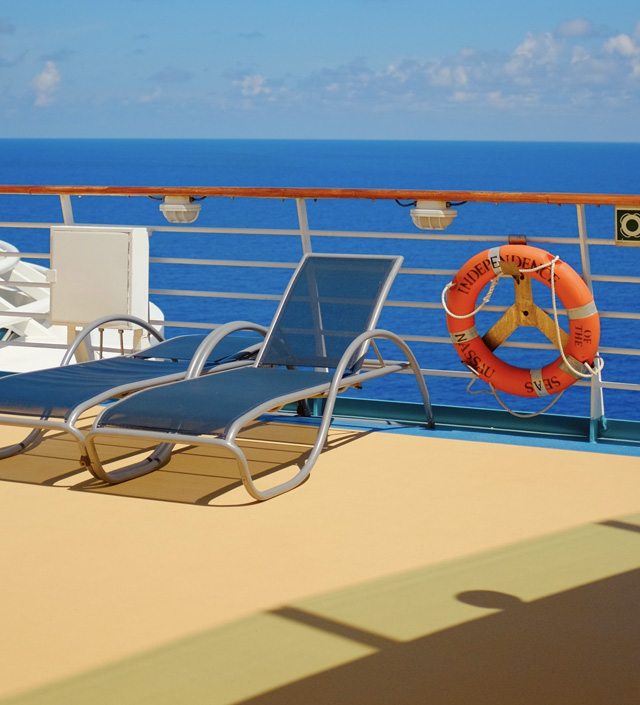Money can’t buy happiness, but it sure keeps the kids in touch. As a financial advisor, you have likely heard that expression. Some of your retired clients might have difficulty bringing far-flung family members back home for the holidays, but you can offer a solution they might not have considered: Underwrite the costs of a cruise as a family get-together for this summer or later in the year. Your suggestion might start a family tradition.
My wife and I took a Caribbean cruise aboard Cunard’s Queen Mary 2 over Christmas and New Year’s. We have sailed with Cunard many times but did not know what to expect on a holiday cruise. We discovered many people are repeat passengers, booking the same trip every year. Many were older, which was not a surprise. Like a world cruise, the holiday excursion has a loyal following.
We were surprised by the number of young children, part of multigenerational families traveling together. Although this took place over Christmas, your client could easily plan a similar vacation to bring the family together any time of year.
One of the benefits of cruising is you pay a small deposit now and one of two installments later. The exception is “sailing soon savings” on last minute deals.
Here are 14 pointers to consider when you present this idea to your clients:
- Choose a family-friendly cruise line. Different cruise lines have different personalities. Disney, Carnival, Norwegian and Royal Caribbean are kid-friendly examples. Princess and MSC fit into this category too. At the other end of the spectrum, Virgin Voyages does not accept passengers under the age of 18. Other lines like Azamara can best be described as cruise lines for people whose children have grown. A travel agent can provide guidance in this area.
- Group discounts may be available. Suppose you have more than 10 people traveling together. Some cruise lines might give a free fare for someone over that number. Perhaps if you book 15 people, the 16th sails free. Others cruises might let very young children sail for free. Maybe a cruise will offer an onboard credit, money to be spent aboard the ship during the family vacation. Perhaps it’ll offer a cabin upgrade when booking for a large group. Each cruise line handles this in its own way. You will want to do some research.
- Is your city a home port? If your extended family lives in the New York area, you are in luck. A few cruise lines sail out of Brooklyn or Manhattan. Bayonne, N.J., has a cruise port, too. This eliminates the need to book flights and hotels that greatly increase the cost of the vacation. [Carnival Corp. said the Baltimore bridge collapse on March 27 could have a $10 million impact on adjusted EBITA and adjusted net income this year; the cruise operator is temporarily moving its Baltimore-based cruises to Norfolk. Va.]
- Interior cabins are fine. Today’s cruise ships might seem to be built from Lego blocks. Most cabins are identical in size. On one quiet day when our very small cruise ship was docked in Greece, I counted the balconies on one deck of a very large ship. There were almost 100 balcony cabins from bow to stern! Families with young children do not need a balcony with an open railing 10 stories above the ocean.
- Cabins can fit more than two people. For families traveling with young children, the ship should have cabins with two lower beds and two upper bunks that fold down from the ceiling. The cabin steward does all the mechanical stuff for you. The cost of putting someone in those upper bunks might be surprisingly low. Most balcony cabins have a small sofa that doubles as a convertible bed. For adults with adjoining balcony cabins, the partitions between balconies can often be folded away. The staff does this for you. Sometimes there are internal connecting doors between cabins.
- Many dining options. Your sophisticated clients might think they can dine only at set times in the main dining room — in their view, a less-than-ideal situation. Cruise ships have plenty of dining options, including a buffet restaurant and room service. This is usually included in the cruise fare.
- Drinks, too. Most buffet restaurants have free coffee and juice stations open 24/7. Sodas are going to cost you. Most cruise lines offer beverage packages, priced on a per-person-per-day basis. This can be a cost your children pick up for their children.
- Children’s activities. Different cruise lines target different audiences. A travel agent can give helpful advice in this area based on the children’s ages. Check out the cruise ship’s website and brochures. A family-themed ship can be like an amusement park at sea. Even more sedate ships have a children’s club program.
- Shore excursions. Some ships visit a port a day. Back home, you might let your children travel the city unaccompanied. Maybe not. If you have older relatives, the same rules might apply. Imagine saying, “We let everyone enjoy free time exploring this city where everyone speaks a foreign language, and you need to be back onboard at 5 p.m. before the ship sails away.” What could possibly go wrong? Cruise ships offer organized tours called shore excursions. These are usually not cheap, but you might have received an “onboard credit” as a perk when you booked. The tours, organized by the ship, often in conjunction with a third-party operator, ensure passengers will get back to the ship before it sails. Now consider the flip side: If your family stays onboard, the pool likely won’t be crowded, and deck chairs will be easy to find.
- Celebrating the holiday. When we sailed over Christmas, the holiday was the main theme. Santa’s arrival was a big deal. He gave presents to the children. There was caroling around the Christmas tree. Passengers were encouraged to decorate their cabin doors. Plenty of people wore Christmas sweaters. Every passenger got a present on their bed on Christmas morning. (It was a nice notebook — red leather, I think.) We got the Christmas experience without the work.
- Religious services. Cunard did not forget the reason for the season. There were multiple religious services for the holiday. Midnight Mass was celebrated. The captain conducted an interdenominational service on Christmas morning.
- Health insurance. Have you seen those TV commercials selling health insurance? They say, “Your coverage goes with you, anywhere in the U.S.” What they do not say is your coverage likely ends at the shore. Since your client is older, they will want to investigate travel-specific health insurance. The cruise line likely offers a package, and a travel agent should have several ideas. You can also get health insurance coverage expressed as a dollar amount. The policy we buy when we travel covers each of us for $100,000 in medical expenses for the days we are away. On our trips, the cost has been about $32 per person.
- Medical conditions. This should be viewed from two perspectives. On one hand, older clients should not get into the “my life is over” mode, telling everyone they “can’t do anything” anymore. Some cruise ships have sophisticated medical facilities with onboard dialysis machines. If your client needs this, they should check out availability before choosing their ship. If they use a wheelchair or walk slowly, remind them cruise ships have no hills and lots of flat decks. Elevators are plentiful. On the other hand, they do not want to run out of medications and assume they can simply refill their prescriptions onboard. They should bring extra in case there is a travel delay. If they have a serious medical condition, they should be aware that cruise lines usually have policies on who can and cannot travel. The good news is they are experienced in accommodating older passengers.
- Quality time. Is everyone back home so busy that your client cannot sit down with a son or daughter for an hour to catch up? Everyone knows gathering the family together for dinner makes sense, but everyone is so busy. A cruise can give your client the opportunity to get to know their grandchildren better or have long, relaxed talks with their children as they lounge in a deck chair.
Would your client enjoy eight or 10 family members gathered for a meal, with someone else doing the cooking and cleaning? How about a different port every day or two, complete with sandy beaches and crystal-clear water? Would they benefit from a stress-free vacation where the different generations can spend quality time together? The first step is helping your client cost it out.
Bryce Sanders is president of Perceptive Business Solutions Inc. He provides HNW client acquisition training for the financial services industry. His book “Captivating the Wealthy Investor” is available on Amazon.







